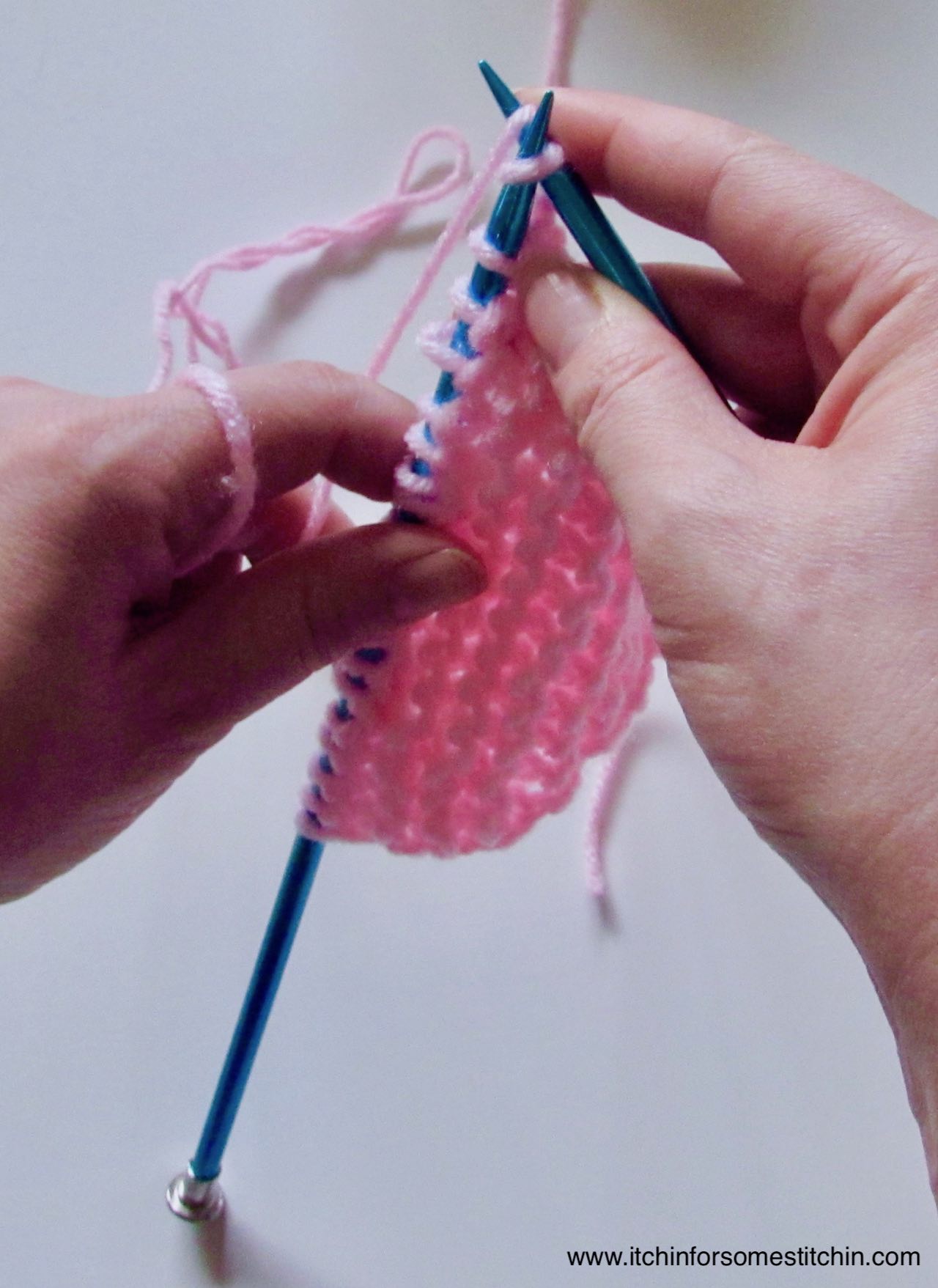
Increase in a Knit Stitch YouTube
Knitting decreases and increases make it possible to get a finished project that fits perfectly every time! Adjusting the number of stitches in a row changes the shape of the finished knit. Adding stitches creates more fabric, removing stitches takes away fabric in a finished piece. Some projects use increases or decreases to change the size of.

Learn How to Increase Stitches On A Knit Row YouTube
How to Knit: Increase (make 1) WOOLANDTHEGANG 252K subscribers Subscribe Subscribed 4.9K 1M views 8 years ago #MAKEALONG #woolandthegang In this video we will show you how to increase.

Knitting helpIncrease stitches type3 YouTube
An M1 increase is made between two stitches by using the horizontal loop of yarn between the stitch on the left needle and the last stitch knit off the left needle. It can lean to the left or right. This is most visibly obvious in stocking stitch, where the increase is created on the knit side.

Learn how to increase knitting stitches with this helpful photo tutorial! Knitting tutorial
2K Share 385K views 7 years ago Knitting Techniques Learn three types of knitting increases: Knit 1 front and back, purl 1 front and back; make one increases, and right- and left-leaning.

Knitting Stitch Increases 4 Steps Instructables
Mark the center stitch. Work 1 row k, 1 row p. On each k row, increase 1 at the beginning of the row, knit to the center, increase 1 on either side of your center stitch, k to the end of the row, and increase 1 again. Once again, give yourself a garter stitch border before and after your increases, to prevent curling.

How To Increase One Stitch When Knitting goknitiinyourhat
Instructions. M1R: We'll start with 'Make One Right' first. Pick up the strand between two stitches with the left needle coming from behind. Insert the right needle into the lifted strand from left to right. Note: This can sometimes be a bit fiddly. So go slowly and knit very close to the tip of the needle.

Knitting How to Add a Stitch in Just Two Simple Steps!
1. Make One (M1) Bar Increase This method is a bar increase - it involves lifting the bar between two stitches and knitting it into the back of it to create a new stitch. This method creates a nearly invisible increase and is great for adding stitches in the middle of a row.

How to do the Central Double Increase in knitting [+video]
The yarnover increase is worked by wrapping the yarn over the right needle between two stitches. This method produces a small hole, or eyelet, in the knitting, so it's most commonly used in lace patterns, where holes are desirable, or in patterns where the eyelet has a decorative effect.

A step by step tutorial on how to knit the central double increase and two fun variations you
Step 1: Increase Stitches Increase Stitch: Basically, you are knitting two stitches like normal, but the first time you knit a stitch you do not slip the stitch off the left needle. Knit a stitch, but don't slip the stitch off your left needle Instead, bring your right needle through the top stitch on your left needle, and knit another stitch.

Two Ways to Increase Knitting Stitches Knitting tutorial, Knitting blogs, Knitting stitches
Knitting increases can be separated into three categories: Those that make use of the strand between two stitches, those that make use of a stitch or a stitch one row below, and those that are knit from the working yarn alone. Almost all increases are also a variation of a purl or a knit stitch and look like it.
/M1_4-5ad10f1418ba010037438ea3.jpg)
How to Increase Stitches with Make One (M1) in Knitting
Find out how to work four different increases to add stitches to your knitting. Learn new techniques with Gathered.

How to Increase or Decrease Knitting Stitches Learn to Knit for Beginners Lesson 6 JoCreates
To increase a single stitch, simply knit in the front and back of that stitch; if more than one stitch needs increasing then use a yarn-over technique instead. This process creates an eyelet which allows additional stitches to be formed easily without making any other changes within the pattern itself.

Knitting increases The ultimate list every knitter should know
Knitting front and back is an easy way to increase. However, increasing this way leaves a visible bump in your knitting, so it is not ideal for all projects. [1] For example, you might use this method of increasing when you are using a textured stitch, such as the garter stitch.

How to Increase & Decrease Stitches Basic Knitting Tips YouTube
A common method of increasing stitches is known as a make-one, abbreviated as M1 or M1L, for make-one-left. The most basic way to increase is knitting in the front and the back of a stitch. The make-one is performed in between two stitches, with the bar between the stitches. How to Do the M1 Stitch

Picture tutorial for this increase using simple stitches just a knit, yarn over, and the
Increasing is used whenever a knitted piece needs to be wider, such as sleeve shaping. One of the easiest and most common increases is to knit into the front and back of a stitch (kfb). If a pattern does not give instructions for the type of increase to use, this is a good choice. Another common, although more difficult, increase is the Make 1.

How to Knit the Increase Stitch (Inc 1) Knitting tutorial, Yarn tutorials, Knitting
The lifted increase creates a new stitch from the stitch below, by lifting it up onto the needle and knitting into it. As long as you understand the basic structure of the knitted fabric, this increase is not hard to work. How to Knit a Lifted Increase The Lifted Increase is one of my favorite increase methods for knitting.